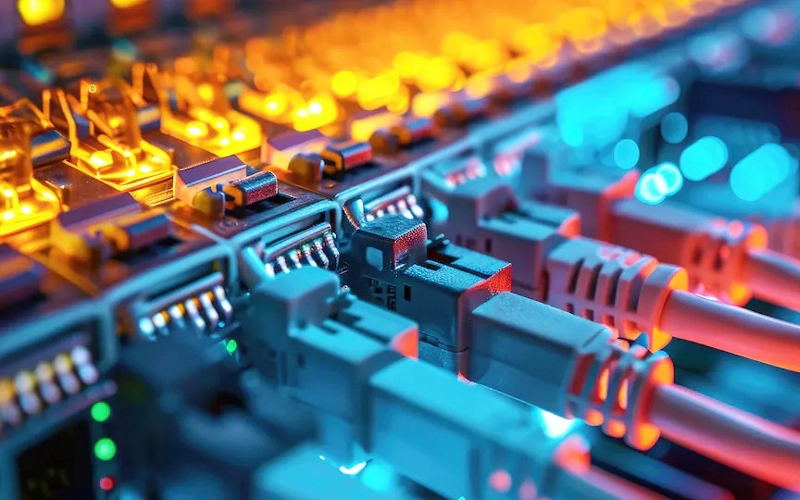As AI & Cloud Computing Drive Demand for Data Centers, Challenges in EMI Shielding & Thermal Management Arise
- Posted on:2025-03-25 09:15:00
- Source:AOK Thermal Pad Manufacturer Industry News
As the demand for data centers surges due to the rise of AI and cloud computing, significant challenges emerge in electromagnetic interference (EMI) shielding and thermal management. These issues stem from the increasing complexity, density, and power requirements of modern data center infrastructure, requiring innovative solutions to ensure reliability, efficiency, and sustainability.
Challenges in EMI Shielding
EMI shielding is critical to prevent electromagnetic fields from disrupting the operation of densely packed electronic equipment in data centers. The growing reliance on AI and cloud computing amplifies these challenges in the following ways:
- Increased Equipment Density
- Limitations of Traditional Shielding
- Complexity in Larger Systems
- Edge Computing Complications
High-performance computing for AI and cloud services demands more powerful servers packed closely together. This density generates stronger electromagnetic fields, heightening the risk of interference, which can lead to data corruption, performance degradation, or hardware failure.
Conventional methods, such as metal enclosures and gaskets, struggle to contain EMI as frequencies and power levels rise. New materials or designs are needed to effectively shield equipment without hindering airflow or scalability.
As data centers expand to meet demand, ensuring consistent EMI protection across sprawling, intricate setups becomes more difficult, requiring advanced engineering solutions.
The shift toward edge data centers—smaller facilities closer to end-users—introduces external EMI sources (e.g., industrial equipment or communication towers), complicating shielding efforts in less controlled environments.
Addressing these challenges may involve developing adaptive shielding technologies or leveraging AI to predict and mitigate interference dynamically.
Challenges in Thermal Management
Thermal management is equally critical, as the intensive processing power required by AI and cloud workloads generates substantial heat. Key challenges include:
- Higher Heat Generation
- Efficient Heat Dissipation
- Energy Efficiency
- Scalability and Optimization
AI-driven tasks and cloud services push servers to operate at higher capacities, increasing heat output per rack. Traditional air-cooling systems are often inadequate for these elevated thermal loads.
Preventing overheating is essential to protect equipment and maintain performance. This requires advanced cooling solutions, such as liquid cooling, which offers better heat transfer but introduces complexities like specialized infrastructure, leak risks, and higher costs.
Cooling accounts for a significant portion of a data center’s energy consumption. As operational costs and environmental concerns grow, designing energy-efficient cooling systems—potentially using renewable energy or waste heat recovery—becomes a priority.
In large-scale data centers, managing heat across thousands of servers is a logistical challenge. Intelligent systems, such as AI-driven predictive cooling, may be needed to adjust thermal management in real time and optimize airflow or heat dissipation.
Conclusion
The rise of AI and cloud computing is transforming data centers into more powerful yet more challenging environments. EMI shielding must evolve to handle denser, high-frequency systems and external interference, while thermal management must address escalating heat loads with efficient, sustainable cooling solutions. Overcoming these hurdles requires a blend of advanced thermal interface materials, innovative designs, and smart techno
If you would like to learn more about AOK performance thermal materials, please visit our website at www.aok-technologies.com


